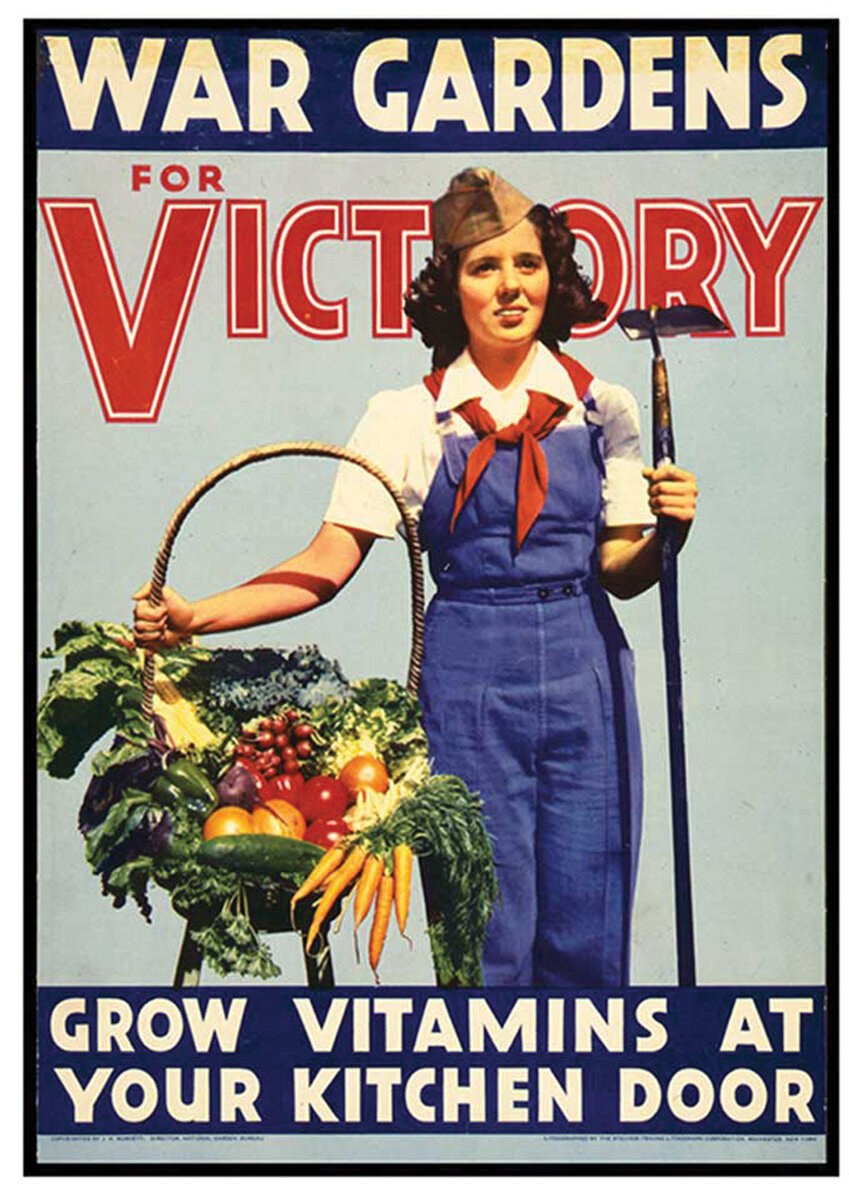Revisiting The Victory Garden
Many would agree that there has been no other time like the one we are living through. However, there have been several times when Americans were called upon to join together to serve the greater good. One such call was the campaign to grow a victory garden.



Started during World War I, victory gardens began as an answer to food shortages across Europe, when Charles Lathrop Pack formed the National War Garden Commission.
The commission encouraged all Americans to contribute to the war effort by planting and harvesting their own fruits and vegetables so that more could be shared with our allies in Europe. Any available plot of land was pushed into action as a garden: schoolyards, empty lots, company grounds, front yards and backyards.
Known as the war garden movement, it was originally promoted through beautifully designed propaganda posters and word of mouth. The first groups to push this effort came from women’s clubs, garden clubs and chambers of commerce. But this movement wasn’t just for adults. Another large sector of gardens was established and maintained through the schools. The United States School Garden Army (USSGA) was formed and enlisted children to become “soldiers of the soil.”
In addition to the posters, there was a concerted effort to help educate those who had never gardened before. Pamphlets were distributed to teach beginning gardeners how to plant, fertilize, treat for pests, and harvest. As the movement grew, additional pamphlets were created to teach people how to can and store everything they were producing.
By 1942, after the United States entered World War II, victory gardens were big again. Victory gardens provided a necessary food source, a way to express patriotism, and helped boost morale.
Over the past five years, gardening has become more and more popular. People want to know where their food comes from and they feel a renewed connection to all that gardening can bring into their lives. Today’s COVID-19 pandemic has, in many ways, increased even more interest in gardening. We have more time, we spend more time in our homes, and in some cases, we are being cautious again about our food supplies. So why not plant your own victory garden?
Whether you grow in pots or in the ground, you can make a difference. It can be healthier, less expensive and certainly more rewarding to grow some of your own food. Let the children help. And, if you find you have too many zucchini or tomatoes, donate them to the local food bank; they always need more.
Let’s sow our own seeds of victory and take this unprecedented moment to revisit our great American past. We can all help win this war, and part of our success may come from planting a victory garden!
Jackie Albarella is an artist, writer and gardener. You can watch her Saturday mornings on WGRZ-TV Channel 2, Buffalo on Daybreak Saturday, where she shares information and tips from her victory garden.
Poster reprints are available at jackiealbarella.com.

